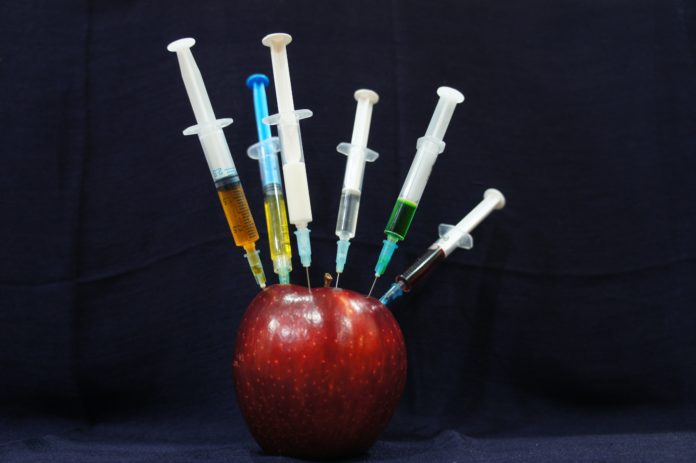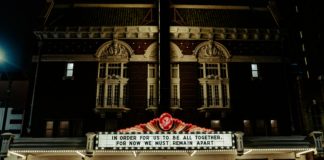The challenge to our health posed by COVID-19 is actually bigger than the coronavirus that caused it. As daunting as that challenge may be, however, it is in fact outsized by an opportunity to heal layers of dysfunction in our healthcare system. And further, this is a challenge and opportunity that Austin is well suited to undertake.
In so many ways, the pandemic has laid bare the past failures of our healthcare. But it has also rocked us all and given us a chance to refocus on the role of physicians and integrative medicine. Going forward, it also creates the opportunity for us to examine and nurture our unusual culture in Austin of collaborating doctors, nurses, alternative practitioners and healers, and a new and future-focused medical school that has just graduated its first class of 49 M.D.s amid the pandemic.
It is tempting to crave a return to “normal” and go back to old habits and ways of being in our personal lives and in healthcare. But we live in a COVID-19 world now. We are changed by this experience and evolving reality. In regards to healthcare, the impetus may be toward just responding to the crisis by only adjusting our delivery system of health care. But the invitation to change and reinvention is much deeper.
We will thrive on the other side of this pandemic, no doubt about that. But it certainly will not be easy. Navigating this viral storm demands that we remain mindful of the many unknowns of what is yet to come as potential waves of greater intensity, and new burdens on health, social and economic systems, may lie ahead. We must remind ourselves that we are still in the early stages of this difficult journey. But despite this uncertainty, my optimism is strong. For we must — and will — radically reframe not only our thinking about COVID-19 specifically, but also about health care generally.
When we ponder what went wrong in our system of care that could have prevented a pandemic, or at least avoided the virulence we now witness, our minds follow familiar contours: a bungled roll-out of testing by the Centers for Disease Control and Prevention, inadequate supplies of patient ventilators, “flattening the curve” amid a race for a vaccine, and a much-debated national health care system that was failing Americans long before COVID-19.
It’s only natural that our imaginations form like jello in a mold around these prefab points, fittings and dividers. Open up your computer, check the news feed on your smartphone or turn on the television. This is the rough frame around all the challenges of this coronavirus. This is, if I can use that overused word, the paradigm of our understanding of a disease and its treatment. But unfortunately the frame is wrong. It is incomplete. We need a new paradigm. That new model of thought must include consideration of many things. Broadly, we must come to terms with the fact that we don’t really have a “health care system” so much as we have a “disease intervention system.” We need to better consider the causes of so-called “zoonotic diseases,” those that mutate from animal into human maladies. And we must more clearly draw the distinction between public health and public relations.
Right now, we are as the blind man in the ancient Indian parable who tries to describe an elephant solely based on what he feels of the tusk. We are used to thinking of diseases as partitioned, as singularities to be identified and eradicated. If you have a bacterial infection your physician hits it with an antibiotic. If you have a cancerous mole, the doctor cuts it away. If you have degenerative hip disease, a surgeon fits you with a new one made of titanium. These are the miracles of modern, scientific medicine. As a physician, I value and frequently prescribe treatments such as these. But as I do so, I always lament that I did not join the patient earlier on his or her health journey. And I also remind myself and patients that such effective treatments must not lead us to arrogantly put all our hopes on a vaccine that may prove elusive or the magic potions that inevitably appear and fade. Effective care is always holistic and complex.
COVID-19 illustrates this paradox. It is both a specific disease and the sum result of a new viral assault that exploits a broad array of existing diseases. COVID-19 alone did not take the staggering numbers of lives we see: 350,000 dead worldwide, more than 105,000 in America, more than 1,500 in Texas and 88 as of this writing in the metro Austin area. The disease we cite is only one piece in a mosaic of causes that include pre-existing conditions that become lethal in combination. These include diabetes, obesity, hypertension, environmental toxicity, fragmented social networks, chronic stress and poverty.
The technical term for this is “comorbidity,” sometimes described using that other term with which we are all becoming more familiar by the day, “underlying condition.” One very recent study chronicled in the Journal of the American Medical Association found that among 5,000 patients hospitalized in New York with COVID-19, almost 90 percent had at least one “comorbidity.” In other words, they were sick before the virus reached our shores, with diseases that in many cases could have been prevented.
This is one important part of the medical elephant that our metaphorical blind man isn’t seeing. Or is certainly not seeing clearly.
“It is more important to know what sort of patient has the disease than what sort of disease the patient has,” remarked Sir William Osler, the 19th Century Canadian physician who is regarded as the father of modern medicine. One of the great ironies of today’s medicine is that we ignore the advice of one of the greatest diagnosticians to ever wield a stethoscope.
There is, though, another dimension to which we are blind in our discussion and imagination of our health system, and it is perhaps even further from our recognition. This is the strange reality that though we call it that, and fund it with almost $4 trillion a year, we don’t — as I mentioned above — have a national health care system. What we have is more accurately described as a national disease treatment system. Some have even described this is a national sickness system, which if intentionally provocative is nonetheless accurate.
It reflects the evolution of healthcare over the past half century from the solo practice, primary care country doctor who we now only see in black and white movies. It was high-touch, but low cost. We have moved from that world to one of high-tech, low-touch, specialized, expensive and often impersonal health care. Some patients feel lost in our system where they see specialist after specialist and receive prescription after prescription and test after test. Patients justifiably wonder whether their specialists even speak to one another. And doctors are burning out too, seeing many patients crammed into a day of clinic, not allowing for connection, and feeling victimized by the system as well. It seems many are searching for a better way — and that way exists.
It is hardly a new dilemma or debate. And the ongoing discussion will ensue this year about this system, amid both a pandemic and a presidential election. This is progress of a sort. As this coronavirus has taught many the folly of excluding millions from treatment, we can only hope that the basics of a safety net will be extended to so many who still lack the means to obtain care. It is good that we are discussing anew the relationship between different groups’ risk factors, the disparities of vulnerability across society and the reality that our fate is a common one. But it will be a debate, and it will be conducted in a national frame and much of it will really get down to the narrow question of who picks up the tab.
As that national conversation continues it will, as we know, surely at times be a national argument, replete with the invective of our partisan age. But in Austin, and in other future-focused communities, there is a much larger and fully framed view. We have the very sturdy building blocks of what I call a “wellness care system.” We are fortunate in that we can see the entire elephant — if we chose to look.
Here in Austin we have a deeply educated and experienced medical community. It includes both highly trained specialists at the cutting edge of science and evidence-based medicine. There are doctors working at the forefront of emerging new therapies such as stem cell treatment for diseases as diverse as spinal injury and Alzheimer’s. We also have so many of the complementary practitioners specialized in acupuncture, meditation and pain management. Yoga, massage and fitness programs are not exotic in Austin. They are part of our broad care community.
And we have a large and growing community of physicians, who, like myself, have specialized in integrative medicine. Much of what we do is work with patients as partners to access and utilize all the tools in this growing health toolkit, with an emphasis on doing so before illness becomes chronic. Many of us have opted out of insurance to have the independence to work for and with our patients and not be confined by the bureaucracy of insurance. We are working to transform the healthcare delivery system as well as address root cause care. The mindset of the population of Austin is open for this new way of thinking and acting. We are taking on the challenge and responsibility of not only the new way of life and the precautions to slow the spread of a virus, but also the lifestyle changes that can help us be more resilient. We are able to rally for not only the external “PPE” but our internal “PPE” as well.
Two examples that underscore the unusual scope and values that reside in Austin’s wellness care system are the long-established People’s Community Clinic in East Austin, which generally serves those with limited resources and income. The second is the new Dell Medical School at the University of Texas.
In the first case, the Peoples’ Community Clinic does what many free clinics around the nation do, treating underserved communities and patients who often lack insurance. What is unusual about the clinic in Austin is that it also offers acupuncture, chronic disease management, and even legal advice on housing and immigration. I imagine this new era is expanding the Peoples’ view of the elephant even more.
The second case of Dell Medical illustrates a direction of healthcare education that is starting to be more open to an integrative approach. More than half of all U.S. hospitals and medical groups have now adopted some of the principles of integrative health care in recent years. But Dell goes beyond that, and is really focused on producing the next generation of physicians and nurses who have this at the core of their values.
“We work with community physicians and other partners to design better models…” the school declares on its website “…focused on people (not dollars) and results (not treatments).” The school participates in the collective conversation. And this crisis that highlights the wellness of the caretakers escalates the conversation even more to address mind, body and spirit.
Which is why I’m both proud and optimistic about Austin beyond the virus. The wellness system that we so desperately need will not come down from on high as a national model. Rather, it will grow outward from communities and their medical providers who are building a new paradigm upward.
Austin has a dramatic head start. We have the potential to see the full frame and the bigger picture. We have medical and social systems that build and nurture healthy people, a healthy community and work towards a healthier planet.
If you like what you’ve been reading, please click here to subscribe and we will send you updates and our newsletter.






